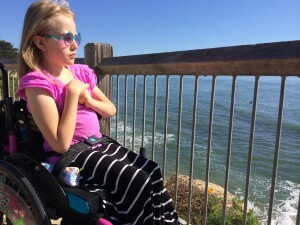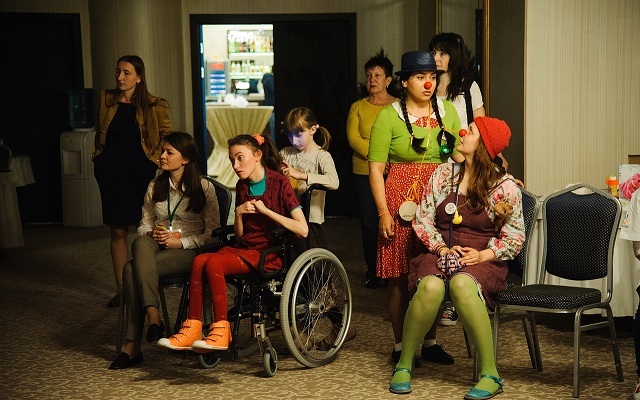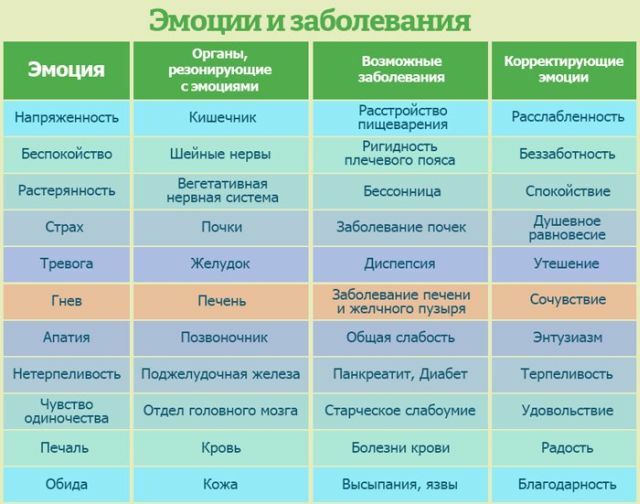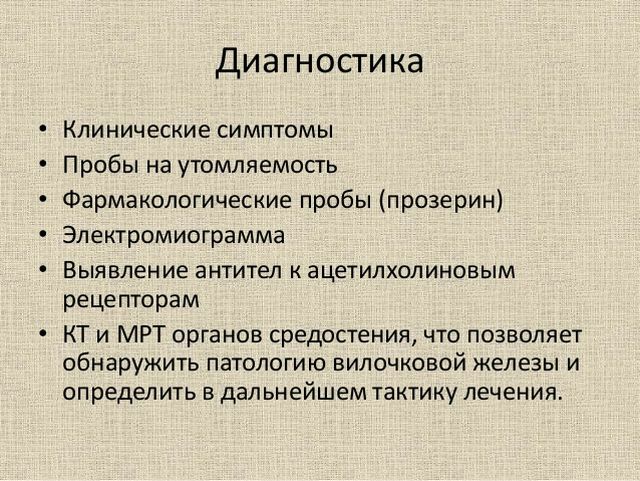 Rett syndrome is a serious and rare hereditary pathology that occurs in female children.
Rett syndrome is a serious and rare hereditary pathology that occurs in female children.
The disease is described by the Austrian physician Andreas Rhett, who first noticed similar symptoms in several girls and suggested a separate psychoneurological disease. The scientist investigated and described 31 cases of pathological disorders.
It has now been established that Rett's syndrome is associated with a mutation of the X chromosome. Since girls have two chromosomes, they live to the end of the gestational period and seem at first sight quite healthy. Boys who have one X chromosome are not viable and die in the prenatal period or in the first months of life.
Classical manifestations of Rett syndrome are stereotyped hand movements, as if the patient is constantly washing them, as well as wringing and squeezing brushes.
Similar symptoms can be confused with manifestations of autism, but the further clinical picture of both diseases is somewhat different. Degenerative changes in the brain progress and in the future patients lose their acquired motor and mental skills.
Contents
- Statistic
- Association of Rett syndrome
- World congress
- Gene mutations - determining factor
- First signs
- Development stages
- Characteristics of violations
- Modern diagnostics
- What is modern medicine capable of?
- Forecasts and expectations
Statistical data
According to statistics, 1 girl per 10000-15000 newborn female infants is affected. Most often, Rett syndrome occurs in Norway, Italy, Hungary. There are sporadic cases of the syndrome in some rural areas.
Hereditary anomalies were detected in identical twins and those pairs of twins that were brought up in different social environments.
Association of Rett Syndrome
Patients with a rare disease need constant care and adequate perception of their motor and  intellectual functions by surrounding people.
intellectual functions by surrounding people.
Therefore, in Russia there is the Association of Rett syndrome, the main task of which is medical advice to parents, information support and rehabilitation assistance.
On the official website there is a feedback form where parents can ask questions of interest to them, as well as get acquainted with the latest achievements of the world medicine in the treatment of the disease.
World Congress
World Congress on Rett syndrome occurred in May 2016 in Kazan, its goal was to unite scientists, practitioners and parents of patients suffering from a rare ailment.
The congress was attended by medical specialists from Italy, the Netherlands, Israel, Japan, the United States and Russia.
The Scientific Committee came to the conclusion that pediatricians are not too oriented in the first manifestations of the syndrome, and many doctors pay little attention to the rehabilitation of patients with rare( orphanic) diseases. The event was organized by the Ministry of Health of Russia, Tatarstan, non-profit associations.
The conference announced the latest achievements of scientists and identified further ways of treating the disease. Also present was the chief freelance expert on genetic research of the Russian Federation Sergey Kutsev, who noted that in Russia children with rare diseases are out of the sphere of attention of specialists in social services, many of them are inaccessible to rehabilitation centers.

Gene mutations - determining factor
Experts believe that the reason lies in the genetic mutation associated with the gene MECP2.As a result of a hereditary disorder, a glutamine receptor deficiency in the basal ganglia, dopamine receptors in the caudate nucleus, and violation of cholinergic structures are revealed. The MECP2 gene is associated with the X chromosome and controls a particular protein( MESP2).
With normal gene function, this protein ensures the proper development of the brain, but if there is a mutation, the mental and physical skills regress. Delay in the lag of brain structures is detected by the age of 4 years of the child.
First signs of
 Girls are born without special deviations and pediatricians do not find anomalies up to 6-18 months. The only thing that can alert a doctor is low body temperature and hypotension of the muscles of the trunk. Such signs are often written off for postpartum disorders, so little attention is paid to diagnosis and treatment.
Girls are born without special deviations and pediatricians do not find anomalies up to 6-18 months. The only thing that can alert a doctor is low body temperature and hypotension of the muscles of the trunk. Such signs are often written off for postpartum disorders, so little attention is paid to diagnosis and treatment.
Children are referred to a neurologist who detects a slowdown in the pace of physical development: a later turn of the baby on his back, lack of crawling skills.
The examination reveals excessive sweating of the palms, pallor of the skin. Further motor disorders progress.
Stages of development of
There are 4 stages of the development of the disease:
- Stagnation - temporary suspension of the disease, in which there is no increase in symptoms. Lasts from 6-18 months or more. The child loses interest in the surrounding events, noticeable hypotension of the muscles, slowing the growth of the head and limbs.
- Deterioration of the state. The stage lasts from 1 year to 3-4 years. If the child has mastered the skills of speech, movement, they gradually disappear. There are stereotypical manipulations with hands, violations from the pulmonary system( hyperventilation, shortness of breath, sudden stop of breathing), discoordination of movements, unmotivated anxiety. Already at 2 stages there are convulsive seizures, the treatment of which is not effective.
- Relative stability of , this stage can continue up to the early school age. Mental insufficiency, convulsions, low weight gain, violation of emotional contact with others are noted. Epileptic seizures are replaced by a retardation of the nervous system.
- The final stage of is characterized by a decrease in the frequency of seizures, but there is cachexia, scoliosis, pronounced violations on the part of the breath. Possible inadequacy of movement, determine the low growth of the limbs and a small circumference of the head. In many ways, children with Rett syndrome resemble patients with autism, as indicated by the following symptoms:
- lack of emotional and visual contact with others:
- the same type of hand and body movements;
- loss of social skills;
- crying, spontaneous crying, restless behavior for no apparent reason;
- impaired sensitivity;
- fecal and urinary incontinence;
- progression of symptoms.

However, it is worth paying attention to other signs characteristic of Rett syndrome, namely:
- pulmonary pathology;
- lag in the growth of hands and feet;
- progressive discoordination of movements;
- disorders of the motor apparatus( ataxia, scoliosis);
- frequent epileptic seizures, resistant to therapy with anticonvulsants;
- microcephaly( small skull);
- cachexia( in the late stages).
Gradually the child's face loses its former expression and looks more like a mask, the sight ceases to be purposeful, wanders or rushes to one point.
Video-story about Rett syndrome:
Modern diagnostics of
Diagnosis of the disease includes methods:

- electroencephalography;
- computed tomography of the brain;
- ECG( elongation interval QT, periodic slowing of the rhythm);
- molecular-cytological diagnostics.
Clinical signs are necessarily taken into account, with typical manifestations, a mutation study of genes on the X chromosome is assigned.
The difficulties lie in the low awareness of doctors about rare conditions, sometimes you have to undergo a lot of tests and visit a large number of specialists until a diagnosis is established. In addition, complex genetic studies are available only in large cities where there are scientific centers.
Laboratory testing determines:
- increase in glutamate and beta-endorphins;
- atypical glycolipids in the brain;
- decrease in substance P;
- decrease in nerve growth factors.
What is modern medicine capable of?
From drugs prescribed anticonvulsants, antipsychotic drugs. The means are used to improve blood circulation and stimulate the work of the brain. Treatment is mostly symptomatic.
 It is very important to teach parents ways to communicate with the child, occupational therapy, strengthening communication skills. Particular attention is paid to games as a way of developing speech, motor and cognitive functions.
It is very important to teach parents ways to communicate with the child, occupational therapy, strengthening communication skills. Particular attention is paid to games as a way of developing speech, motor and cognitive functions. Scoliosis treatment is under way. Such children need regular physical therapy exercises to restore muscle tone and massage.
In gastrointestinal disorders, the frequency of the stool is controlled, laxatives and a diet with a high fiber content are prescribed. To prevent cachexia, caloric intake is recommended every 3 hours.
Forecasts and Expectations of
Recent studies have shown that restoring the function of the MECP2 gene allows the removal of neurological disorders. Scientific research was carried out on laboratory mice, during the experiments the reversibility of mental and nervous disorders was proved, the signs of the disease were disappearing.
These experiments give hope to patients and their parents that motor, speech and respiratory functions can be restored.
Statistics show that women with Rett syndrome can live 40 years or more. The main causes of mortality: cardiac arrest, convulsions, perforation of the wall of the stomach, dysfunction of the brain stem.



